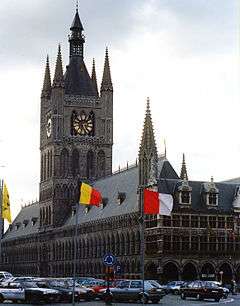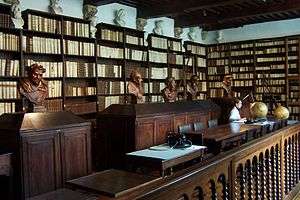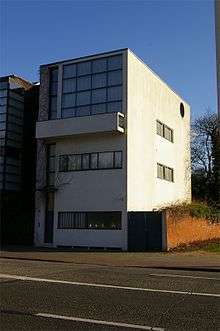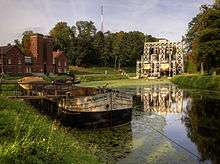List of World Heritage Sites in Belgium
.svg.png)


The United Nations Educational, Scientific and Cultural Organization (UNESCO) World Heritage Sites are places of importance to cultural or natural heritage as described in the UNESCO World Heritage Convention, established in 1972.[1] The Kingdom of Belgium accepted the convention on 24 July 1996, making its historical sites eligible for inclusion on the list. As of 2016, there are 12 World Heritage Sites located in the country.[2]
World Heritage Sites
The table lists information about each World Heritage Site:
- Name; as listed by the World Heritage Committee
- Location; in Belgium
- Period; time period of significance, typically of construction
- Criteria; the criteria the site was listed under by the World Heritage Committee
- Year; the year the site was inscribed on the World Heritage List
- Description; brief description of the site
| Name | Image | Location | Date | Type (Criteria) | Year | Description |
|---|---|---|---|---|---|---|
| Belfries of Belgium and France |  |
Belgium and Northern France | 11th-17th centuries | Cultural (ii, iv) | 1999, extended in 2005 | A total of 56 belfries are listed as World Heritage. Among them are 33 Belgian belfries: Antwerp (Cathedral of Our Lady & Antwerp City Hall), Herentals, Lier, Mechelen (St. Rumbold's Cathedral & city hall), Bruges, Diksmuide, Kortrijk, Lo-Reninge, Menen, Nieuwpoort, Roeselare, Tielt, Veurne, Ypres, Aalst, Dendermonde, Eeklo, Ghent, Oudenaarde, Leuven, Tienen, Zoutleeuw, Sint-Truiden, Tongeren, Binche, Charleroi, Mons, Thuin, Tournai, Gembloux and Namur.[3] |
| Flemish Béguinages |  |
Flanders | 13th century | Cultural (ii, iii, iv) | 1998 | Béguinage (French) or begijnhof (Dutch) are collections of small buildings used by Beguines. These were various lay sisterhoods of the Roman Catholic Church, founded in the 13th century in the Low Countries, comprising religious women who sought to serve God without retiring from the world.[4] |
| Historic Centre of Brugge |  |
Bruges, West Flanders | 12th-19th century | Cultural (ii, iv, vi) | 2000 | Bruges is the capital and largest city of the province of West Flanders in the north-west of Belgium. Along with a few other canal-based northern cities, such as Amsterdam, it is sometimes referred to as "The Venice of the North". Bruges has a significant economic importance thanks to its port. At one time, it was considered the "chief commercial city" of the world.[5][6] |
| La Grand-Place, Brussels |  |
Brussels, Brussels | 1695-1699 | Cultural (ii, iv) | 1998 | The Grand Place is the central square of Brussels. It is surrounded by guildhalls, the city's Town Hall, and the Breadhouse. The square is the most important tourist destination and most memorable landmark in Brussels. It measures 68 by 110 metres (223 by 361 ft).[7] |
| Major Mining Sites of Wallonia |  |
Wallonia | 19th-20th century | Cultural (ii, iv) | 2012 | During the Industrial Revolution in the 19th century, mining and the heavy industry that relied on coal formed a major part of Belgium's economy. Most of this mining and industry took place in the sillon industriel ("industrial valley" in French), a strip of land running across the country where many of the largest cities in Wallonia are located. The named locations of this World Heritage Site are all situated in or near the area of the sillon industriel. Mining activities in the area declined during the 20th century, and today the four mines listed are no longer operational. Nowadays they are each open to visitors as museums.[8] |
| Major Town Houses of the Architect Victor Horta | |
Brussels, Brussels | 19th-20th century | Cultural (i, ii, iv) | 2000 | The architect Victor Horta was well known for creating buildings in the Art Nouveau style fashionable at the time. Four of his most notable surviving works, Hôtel Tassel, Hôtel Solvay, Hôtel van Eetvelde and Maison & Atelier Horta, are listed as World Heritage Sites.[9] |
| Neolithic Flint Mines at Spiennes | .jpg) |
Mons, Hainaut | Neolithic | Cultural (i, iii, iv) | 2000 | The Neolithic flint mines at Spiennes are Europe's largest and earliest neolithic mines, located close to Walloon village of Spiennes, southeast of Mons. The mines were active during the mid and late Neolithic (4300-2200 BC).[10] |
| Notre-Dame Cathedral in Tournai |  |
Tournai, Hainaut | 12th century | Cultural (ii, iv) | 2000 | Notre-Dame Cathedral is a Roman Catholic church, see of the Diocese of Tournai in Tournai. Begun in the 12th century on even older foundations, the building combines the work of three design periods with striking effect, the heavy and severe character of the Romanesque nave contrasting remarkably with the Transitional work of the transept and the fully developed Gothic of the choir. The transept is the most distinctive part of the building, with its cluster of five bell towers and apsidal (semicircular) ends.[11] |
| Plantin-Moretus House-Workshops-Museum Complex |  |
Antwerp, Antwerp | 16th-17th century | Cultural (ii, iii, iv, vi) | 2005 | The Plantin-Moretus Museum is a museum in Antwerp about early-modern printing in general and the famous printers Christophe Plantin and Jan Moretus in particular. It is located in their former residence and printing establishment, Plantin Press, at the Friday Market.[12] |
| Stoclet House |  |
Woluwe-St-Pierre, Brussels | 1911 | Cultural (i, ii) | 2009 | The Stoclet Palace was a private mansion built by architect Josef Hoffmann between 1905 and 1911 in Brussels, Belgium, for banker and art lover Adolphe Stoclet.[13] It was one of the most refined and luxurious private houses of the twentieth century[14] and was lavishly decorated inside, including works by the artist Gustav Klimt.[15] |
| The Architectural Work of Le Corbusier, an Outstanding Contribution to the Modern Movement |  |
Antwerp, Antwerp | 1927 | Cultural (i, ii, vi) | 2016 | The Maison Guiette is the Belgian component of the multinational inscription 'The Architectural Work of Le Corbusier, an Outstanding Contribution to the Modern Movement'. The building was listed among 16 other buildings of Le Corbusier in Argentina, France, Germany, India, Japan and Switzerland. Maison Guiette was designed by Swiss-French architect Le Corbusier in 1926 and it was finished in 1927. It served as the home and workplace of Belgian painter René Guiette. It is the only remaining building designed by Le Corbusier in Belgium. It is also known as Les Peupliers, named after the street where the building is situated.[16] |
| The Four Lifts on the Canal du Centre and their Environs, La Louvière and Le Roeulx |  |
Hainaut | 1888-1917 | Cultural (iii, iv) | 1998 | The lifts on the old Canal du Centre are a series of four hydraulic boat lifts near the town of La Louvière in the Sillon industriel of Wallonia. Along a particular 7 km (4.3 mi) stretch of the Canal du Centre, which connects the river basins of the Meuse and the Scheldt, the water level rises by 66.2 metres (217 ft). To overcome this difference, the 15.4-metre lift at Houdeng-Goegnies was opened in 1888, and the other three lifts, each with a 16.93 metres (55.5 ft) rise, opened in 1917.[17] |
Tentative list
In addition to sites inscribed on the World Heritage list, member states can maintain a list of tentative sites that they may consider for nomination. Nominations for the World Heritage list are only accepted if the site was previously listed on the tentative list.[18] As of 2016, Belgium lists seventeen properties on its tentative list:[19]
- Antwerp historic town centre, Antwerp
- Historic buildings of the University of Leuven, Leuven
- Hoge Kempen landscape, Limburg province
- Ghent historic town centre, Ghent
- The Mosane Citadels, Dinant, Namur and Huy
- Battle of Waterloo Cyclorama, Braine-l'Alleud
- Battlefield of Waterloo, Braine-l'Alleud
- Prince-Bishops' Palace, Liège
- Roman road from Bavay to Tongeren
- High Fens landscape, Liège province
- Palace of Justice, Brussels
- Bloemenwerf by Henry van de Velde, Uccle
- Galeries Royales Saint-Hubert, Brussels
- Cemeteries and memorials of the Great War
- Spa historic town centre, Spa
- Koloniën van Weldadigheid, Merksplas and Wortel
- Extension to the Joint World Heritage Property Primeval Beech Forests of the Carpathians and the Ancient Beech Forests of Germany. Site shared between Belgium and various countries.
References
- ↑ "The World Heritage Convention". UNESCO. Retrieved 21 September 2010.
- ↑ "Belgium". UNESCO. Retrieved 10 August 2016.
- ↑ "Belfries of Belgium and France". UNESCO. Retrieved 10 August 2016.
- ↑ "Flemish Béguinages". UNESCO. Retrieved 10 August 2016.
- ↑ "Historic Centre of Brugge". UNESCO. Retrieved 10 August 2016.
- ↑ Dunton, Larkin (1896). The World and Its People. Silver, Burdett. p. 158.
- ↑ "La Grand-Place, Brussels". UNESCO. Retrieved 10 August 2016.
- ↑ "Major Mining Sites of Wallonia". UNESCO. Retrieved 10 August 2016.
- ↑ "Major Town Houses of the Architect Victor Horta (Brussels)". UNESCO. Retrieved 10 August 2016.
- ↑ "Neolithic Flint Mines at Spiennes (Mons)". UNESCO. Retrieved 10 August 2016.
- ↑ "Notre-Dame Cathedral in Tournai". UNESCO. Retrieved 10 August 2016.
- ↑ "Plantin-Moretus House-Workshops-Museum Complex". UNESCO. Retrieved 10 August 2016.
- ↑ Sharp, Dennis (2002). Twentieth Century Architecture. Mulgrave: Images Publishing Group. ISBN 1-86470-085-8. pp.44
- ↑ Watkin, David (2005). A History of Western Architecture. London: Laurence King Publishing. ISBN 1-85669-459-3. pp.548
- ↑ "Stoclet House". UNESCO. Retrieved 10 August 2016.
- ↑ "The Architectural Work of Le Corbusier, an Outstanding Contribution to the Modern Movement". UNESCO. Retrieved 10 August 2016.
- ↑ "The Four Lifts on the Canal du Centre and their Environs, La Louvière and Le Roeulx (Hainaut)". UNESCO. Retrieved 10 August 2016.
- ↑ "Tentative Lists". UNESCO. Retrieved 7 October 2010.
- ↑ "Tentative List – Belgium". UNESCO. Retrieved 10 August 2016.
